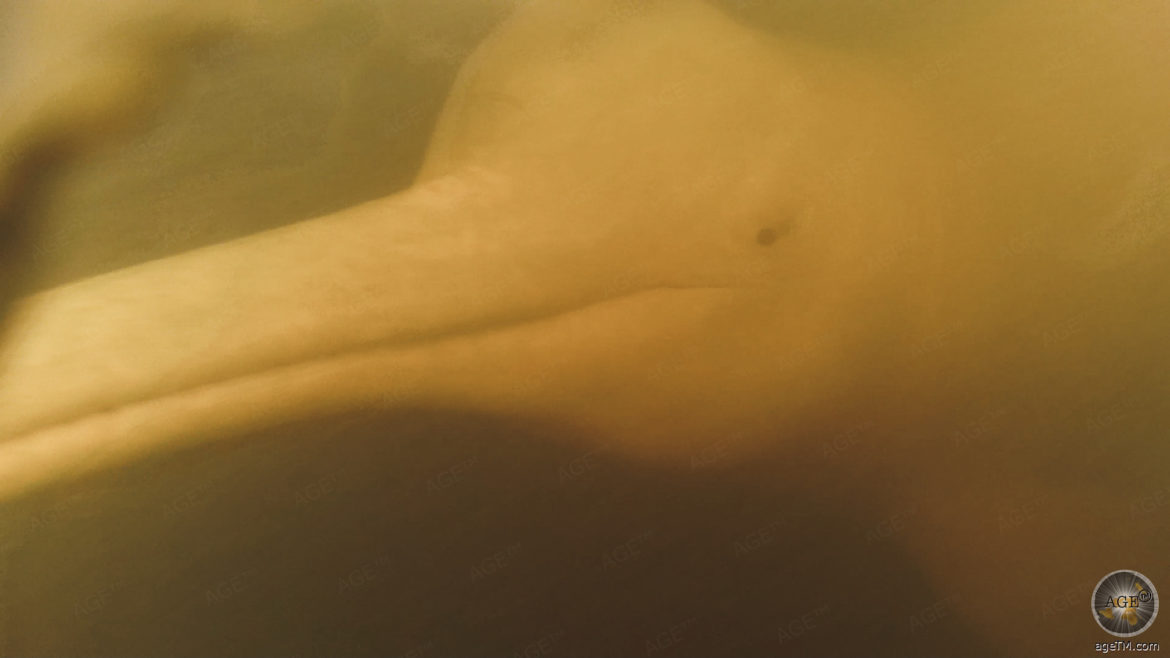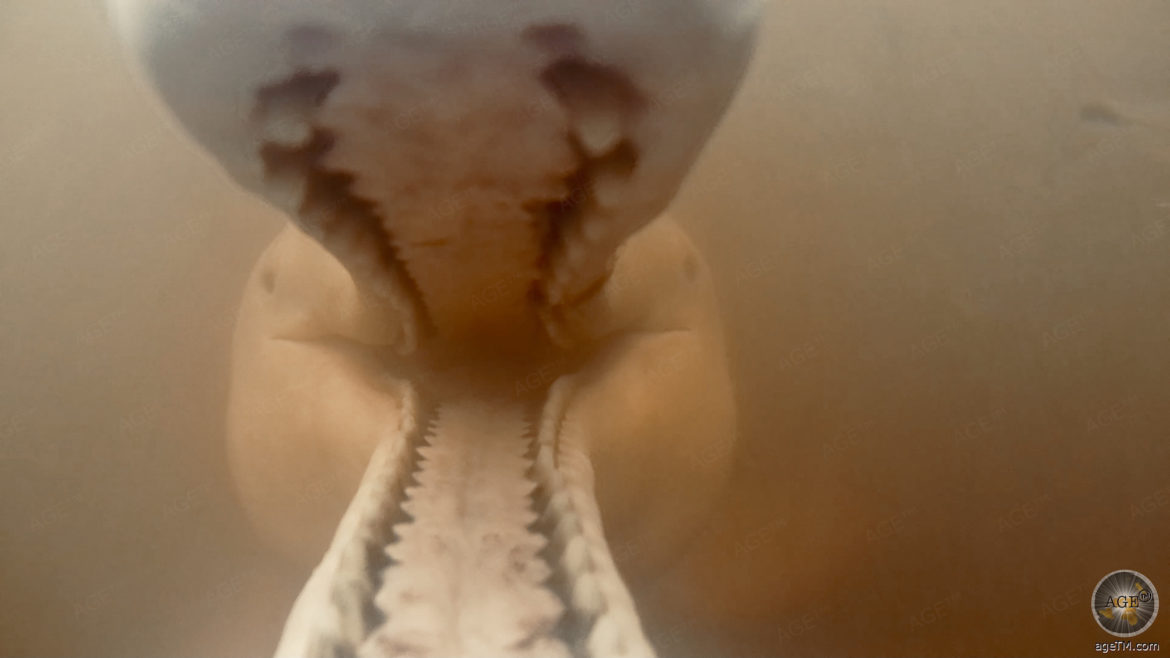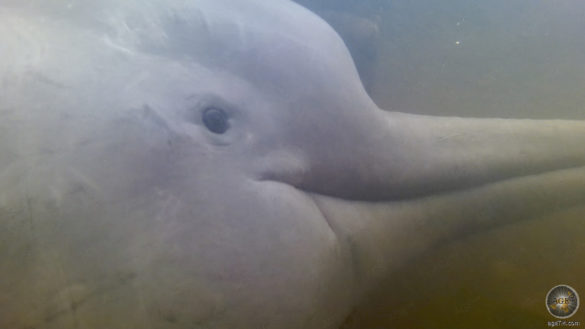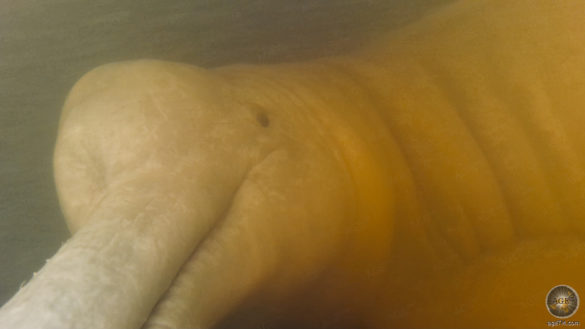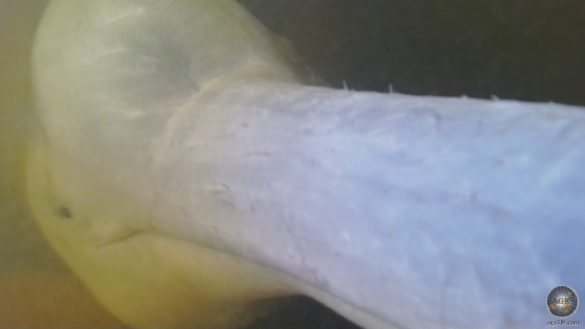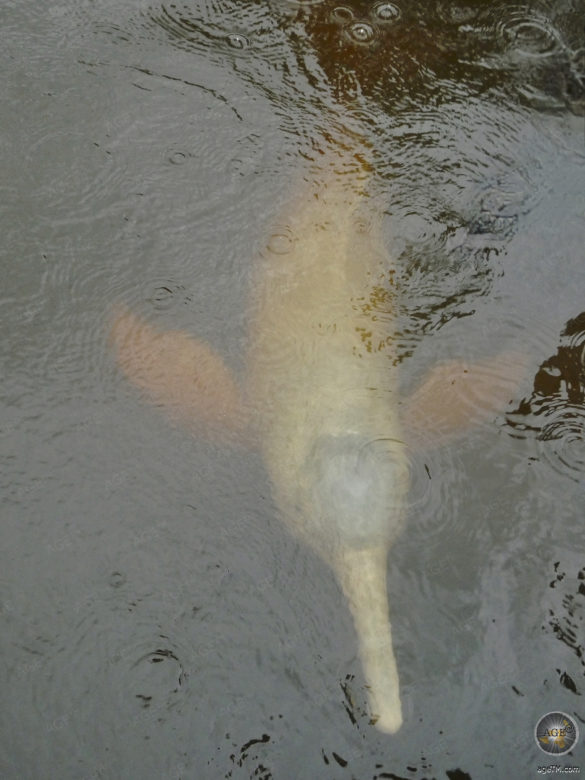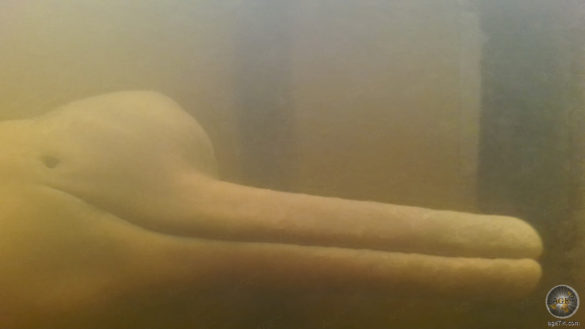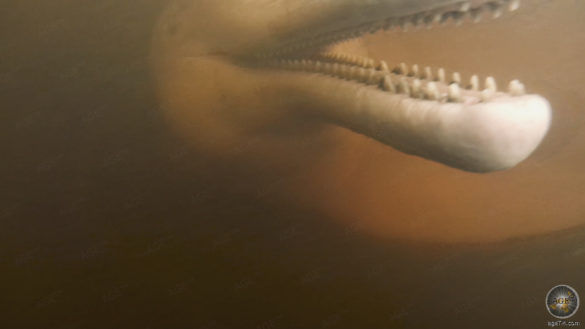Amazon river dolphins (Inia geoffrensis) are found in the northern half of South America. They are freshwater dwellers and live in the Amazon and Orinoco river systems. Their color varies from gray to pink depending on their age, gender and body of water. That is why they are often referred to as pink river dolphins. Amazon river dolphins belong to the cetacean order. However, unlike sea creatures, they are perfectly adapted to murky waters and the floodplains of the rainforest. The particularly long snout is typical of their appearance. The Amazon river dolphin is considered endangered. Exact inventory numbers are unknown.
The cervical vertebrae of the Amazon dolphins have no bony adhesions. The extraordinary mobility of the neck in all directions enables the river dolphins to hunt fish in the flooded Amazon region. In the often murky waters, they use the echo direction typical of whales to orientate themselves.
Amazon River Dolphin Characteristics - Facts Inia geoffrensis
| Order: whales (Cetacea) / suborder: toothed whales (Odontoceti) / family: Amazon river dolphins (Iniidae) | |
| Scientific: Inia geoffrensis / Trivial: Amazon river dolphin & pink river dolphin & pink freshwater dolphin & boto | |
| gray to pale pink, very long snout with bristly whiskers, back bar instead of fin | |
| 2-2,5 meters long, largest species of river dolphins / approx. 85-200 kg, males> females | |
| Sexual maturity with 8-10 years / gestation period 10-12 months / litter size 1 young animal every 3-4 years | |
| mean life expectancy is estimated at over 30 years | |
| Fresh water rivers, lakes and lagoons | |
| Solitary animals or small groups in areas with a high abundance of fish, orientation using an echo sounder Seasonal movement is dependent on fish migration & water level fluctuations | |
| Fish, crabs, turtles | |
| The river systems of the Amazon and Orinoco (in Bolivia, Brazil, Ecuador, Guyana, Colombia, Peru and Venezuela) | |
| unknown (Red List 2021) | |
| Red list: endangered, population declining (last assessment 2018) Washington species protection: Annex II / VO (EU) 2019/2117: Annex A / BNatSCHG: strictly protected |
Nature & animals • animals • Animal lexicon • Mammals • Marine Mammals • whales • Dolphins • Amazon Dolphin
Special features of the Amazon dolphin
Why are Amazon dolphins pink?
The coloring depends on several factors. Age, gender, water color and water temperature should play a role. Young animals are usually gray in color. The gray pigment decreases in adults. Some sources also claim that skin thickness is decreasing. The blood flow in the capillaries of the skin becomes visible, which makes it appear pink-red. The rosy color disappears in cold water, when the blood supply to the skin is reduced, or in dead animals.
Why do Amazon dolphins rarely jump?
Acrobatic jumps are anatomically hardly possible for the Amazon dolphin, as the cervical vertebrae are not osseous. On the other hand, the animal is particularly agile and therefore very well adapted to the obstructive waters of a flooded rainforest.
What are typical anatomical features?
- Long snout with bristle whiskers
- Inhomogeneous teeth, wide behind for chewing and cracking
- Only very small eyes, no good visual sense (unimportant in the often cloudy water)
- Large melon for ideal echo-sounding location
- Freely movable cervical vertebrae and large flippers for smooth movements
- Males are larger than females
AGE ™ has discovered Amazon dolphins for you:
![]() Where can you watch Amazon dolphins?
Where can you watch Amazon dolphins?
Amazon dolphins live in the northern half of South America. They occur in Bolivia, Brazil, Ecuador, Guyana, Colombia, Peru and Venezuela. They prefer tributaries and lagoons.
The photographs for this article were taken in 2021 Yasuni National Park near the border with Peru in Ecuador. The Yaku Warmi Lodge and the Kichwa community are actively involved in the protection of the Amazon river dolphins. Also near the Bamboo Eco Lodge in the Cuyabeno Reserve from Ecuador could AGETM watch the pink river dolphin several times.
Facts that help with whale watching:
![]() Important characteristics of the Amazon dolphin
Important characteristics of the Amazon dolphin
![]() Systematics: Toothed whale
Systematics: Toothed whale
![]() Size: about 2-2,5 meters long
Size: about 2-2,5 meters long
![]() Blas: difficult to see, but easy to hear
Blas: difficult to see, but easy to hear
![]() Dorsal fin = fin: none, only a narrow dorsal crest
Dorsal fin = fin: none, only a narrow dorsal crest
![]() Tail fin = fluke: almost never visible
Tail fin = fluke: almost never visible
![]() Special feature: freshwater inhabitants
Special feature: freshwater inhabitants
![]() Good to see: back
Good to see: back
![]() Breathing rhythm: usually 1-2 times before descending again
Breathing rhythm: usually 1-2 times before descending again
![]() Dive time: often only about 30 seconds
Dive time: often only about 30 seconds
![]() Acrobatic jumps: very rare
Acrobatic jumps: very rare
Nature & animals • animals • Animal lexicon • Mammals • Marine Mammals • whales • Dolphins • Amazon Dolphin
Baur, MC (2010): Studies on the reproduction of Amazon dolphins (Inia geoffrensis) in the Mamirauá reserve using ultrasound diagnostics, vaginal cytology and hormone analysis. [online] Retrieved on April 06.04.2021th, XNUMX, from URL: https://edoc.ub.uni-muenchen.de/11990/1/Baur_Miriam.pdf [PDF file]
Federal Agency for Nature Conservation (oD): Scientific information system for international species protection Taxon Information Inia geoffrensis. [online] Retrieved on June 03.06.2021, XNUMX, from URL: https://www.wisia.de/prod/FsetWisia1.de.html
Da Silva, V., Trujillo, F., Martin, A., Zerbini, AN, Crespo, E., Aliaga-Rossel, E. & Reeves, R. (2018): Inia geoffrensis. The IUCN Red List of Threatened Species 2018. [online] Retrieved on April 06.04.2021, XNUMX, from URL: https://www.iucnredlist.org/species/10831/50358152
WWF Germany Foundation (January 06.01.2016, 06.04.2021): Species Lexicon. Amazon River Dolphin (Inia geoffrensis). [online] Retrieved on April XNUMXth, XNUMX, from URL: https://www.wwf.de/themen-projekte/artenlexikon/amazonas-flussdelfin
Wikipedia authors (07.01.2021): Amazon Dolphin. [online] Retrieved on April 06.04.2021th, XNUMX, from URL: https://de.wikipedia.org/wiki/Amazonasdelfin

